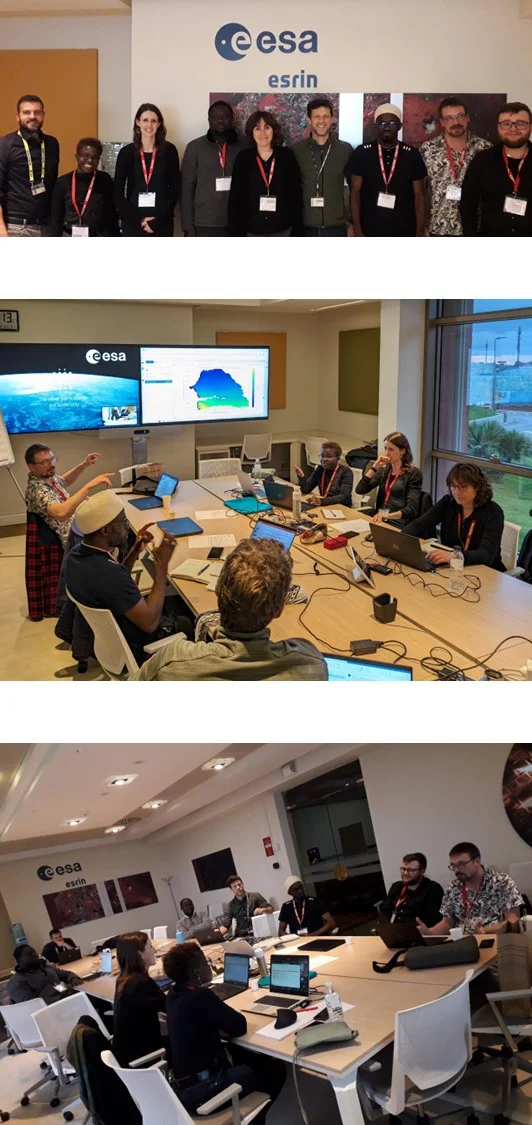Stakeholder Workshop at ESA ESRIN
20/12/2023
The WaSCIA project team met on 13th December in ESRIN, Frascati for a successful review meeting and workshop. In attendance were project team members from Telespazio UK, RRS-Hydro and Telespazio France plus project partners from LPAOSF and DGPRE (AGRHYMET joined online). This was the first in-person project meeting and was a great opportunity for the team to present the current status of the WaSCIA tool development, discuss the outputs and gather feedback from key African partners.
The team met with the ESA technical officers and initially presented the current project status during the milestone review meeting.
After this there was a workshop where the WaSCIA project team showcased the applications that have been developed through a live demo.
The WaSCIA solution comprises three main components:
- Soil Water Stress Application
- Climate Indices Application
- Threshold Warning Tool
RSS-Hydro are leading development of an application that generates soil moisture and evaporative water loss outputs from Sentinel-3 images, for Senegal. Telespazio UK are leading development of an application that generates climate indices from ERA5-Land reanalysis data, for Senegal. Sitting alongside this application, a threshold warning tool has been prepared to enable users to compare the climatology and the in-season time-series of a selected climate index.
Both WaSCIA applications are now deployed on the cloud-based analytical platform WASDI (Web Advanced Space Developer Interface). The threshold warning tool will be made available shortly for users to download from the WaSCIA project website.
A live demo of both applications and the threshold warning tool was performed by Telespazio France to demonstrate the end-to-end workflow that would be followed by a user, to show the data outputs generated, and to explain the data visualisation options provided. The project partners from LPAOSF, DGPRE and AGRHYMET, the project’s primary users, provided valuable feedback about the user interface, the data outputs and data visualisation options. This feedback will be used to shape the next stage of the tool development and improvements.
